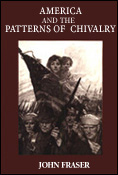About the author
July 18, 1928 — Sept. 11, 2023
John Fraser was born in North London in 1928. He was a boarder at a country grammar school during the war, did his two years of National Service in the R.A.F. (clerk, general duties), and went up to Balliol College, Oxford, in 1948 as an Exhibitioner (junior scholar). After teaching high-school for two years in Israel, he moved to the States, took the Trilling/Barzun seminar at Columbia, and in 1961 received a Ph.D. in English at the University of Minnesota with a philosophy minor and a thesis on George Sturt, English rural labouring life, and the rhetoric of sociological presentation.
While he was at Minnesota, he and the Midwestern artist Carol Hoorn were married. In 1961 they moved to Halifax, Nova Scotia, where he himself taught at Dalhousie University until his retirement as George Munro Professor of English in 1993 and Carol (see Homepage) achieved national recognition, with works in numerous public and private collections. In 1990 he gave the Alexander Lectures at the University of Toronto, following in the footsteps of F.O. Matthiessen, Northrop Frye, Hugh Kenner, and others.
His three print books, Violence in the Arts (1974), America and the Patterns of Chivalry (1982), and The Name of Action: Critical Essays (1985) were published by Cambridge University Press.

He is also the author of “Modern Poetics: Twentieth-Century American and British” in the Encyclopedia of Poetry and Poetics (Princeton U.P., 1965), “Crane, Norris, and London” in American Literature, vol. IX of the New Pelican Guide to English Literature (1988), and articles in a variety of journals, including the Partisan Review, the Southern Review, the Yale Review, and Studio International.
Critics found his widely-reviewed Violence in the Arts: “both scholarly and extraordinarily interesting” (New Republic), “compellingly readable” (Film Review Annual), “continuously stimulating” (Economist), “profoundly illuminating” (Psychology Today), “brilliant” (Los Angeles Times), “an extremely agile and incessantly active mind which illuminates almost every subject it touches” (Spectator).

Reviewing America and the Patterns of Chivalry in Yearbook of English Studies, Edward Wagenknecht called it “a brilliant and utterly absorbing work. There are not many learned books which have the unputdownable quality of a thriller; this is one of them.... None, I think, can read his book without profit, and certainly nobody will be bored.” Richard Lehan in the Times Literary Supplement found its documentation “awesome.”
After Carol’s death in 1991, he began extensive archival work on her art and papers, and in 1993 co-curated with Leighton Davis “A Visionary Gaze: Carol Hoorn Fraser, 1930-1991.”
In 1999, he went online with jottings.ca, principally in order to get a lot of information about Carol and her art out onto the Web. Since then, his own side of the site has grown considerably, and now consists of the equivalent of five print books, plus other items.
Nihilism, Modernism, and Value comprises three of the four 1990 Alexander lectures. They range widely, but principally teaze out how major creators inside modernism, particularly during the years from 1870 to 1930 (approximately), resisted the claims of nihilism as a superior wisdom.
Language, Truth, and Consequences consists of four articles from the Seventies and Eighties, concerned in various ways to rebut, with the help of common-language and common-experience examples, flesh-creeping literary/philosophical talk about the ineluctable arbitrariness and rootlessness of language, the impossibility of communication, and the like.
Thrillers brings to the protean genre a wealth of reading done for pleasure over the years, a refusal to abide by boundaries that separate works of “literature” from “mere entertainment,” a critical alertness that informs three long chapters treating particular thrillers (no, not by Graham Greene, Somerset Maugham, Raymond Chandler, and the usual suspects) as important literature, a willingness to be “judgmental,” mostly favourably, about a lot of other thriller writers, an enthusiastic unpacking of the kinds of enjoyment that he himself has derived from thrillers, and a pugnacious-playful pleasure in challenging judgments by others writing on the subject.
Voices in the Cave of Being, done very largely in the new millennium, is informed by a deep commitment to, and pleasure taken in, so-called formal verse. It includes commentaries on thirty-six individual poems that have given him great pleasure, the table of contents (supplemented until well into the Twentieth century by the texts themselves) of a “revisionist’ historical anthology of formal poems, and reflections (“Powers of Style,” Voices and Analogy,’’ “Lagniappe,” etc.) about the nature of poetic language.
Found Pages, a spin-off from Thrillers and still growing, is a very long accumulation of information, speculation, and literary-critical opinion about an all but forgotten English writer who under seven or eight pseudonyms wrote gangster novels, Westerns, supernatural fiction, and other kinds of books. A lot of them are pulps, very few of them have been previously described, and a number of them may be permanently lost. The biographical, bibliographical, and aesthetic problems have made this a learning experience. Much still remains to be discovered.
Found Pages is in part a teach-in, demonstrating what it means to operate as a “respectable” scholar-critic in an area rife with uncertainties (biographical, bibliographical, aesthetic) in which no help can be obtained from pre-existing scholarly-critical opinions. Back in earlier centuries, “serious” writers, as witness Samuel Johnson’s Lives of the Poets, existed in that kind of limbo. It is good to have to go back to basics and risk one’s own judgments.
Ten of Fraser’s little self-published artbooks of his photographs are now in the photography archives of the Minneapolis Institute of Arts. A smaller selection of his photos can be accessed via the button “Visuals” on the left of the screen.
June 2002–December 2007

